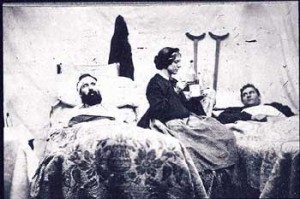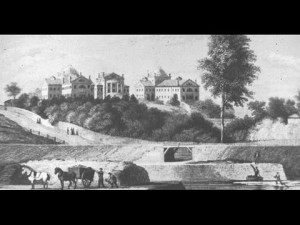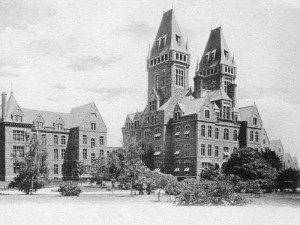Non-urban communities had always held the harvest season in high esteem: good crops meant sufficient food for the winter; there was satisfaction in seeing hard work pay off; and perhaps not least, harvest meant an end to the constant labor involved with maintaining a healthy garden. Continue reading
Tag Archives: Buffalo State Asylum
Training for Nurses
Just as war in the Crimea led the way for women’s involvement in nursing for Great Britain, the Civil War led to similar breakthroughs in the U.S. Dorothea Dix led the effort to get women into the hospitals. She wanted her nurses to be old and plain so that decorum would not be upset, but eventually accepted women outside those parameters because of the great need. The inroads females made in overcoming the exclusivity of male nursing care during the war helped them retain their place in hospitals afterward.
Doctors particularly saw the need for nurses in insane asylums, because of the often long-term nature of patient care. In 1880, the McLean Hospital for the Insane began to give instruction to attendants in the “manipulations of nursing,” and introduced the term “nurses” for attendants and “patients” for boarders.
In 1883, the Buffalo State Asylum began instruction for female attendants. Some of the questions included:
What are the physical conditions of acute melancholia; detail the care such patients need.
What are the characteristics of a fit?
Give method of applying moist heat–a turpentine stupe fomentation–poultices–a mustard plaster.
What is a deodorizer; an antiseptic; and a disinfectant?
Give apothecary’s weights; dose of powdered opium; tincture of opium, morphine; symptoms and treatment of opium poisoning?
________________________________________________________________________



